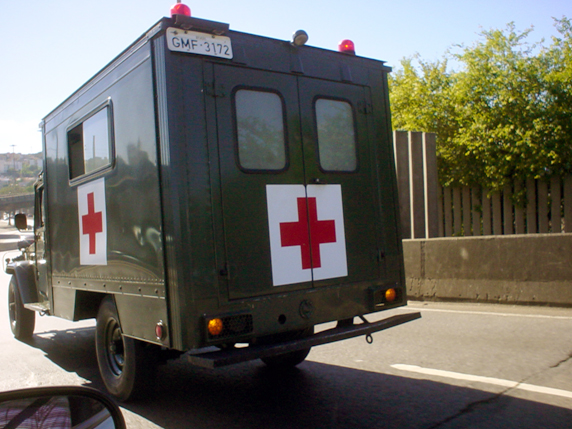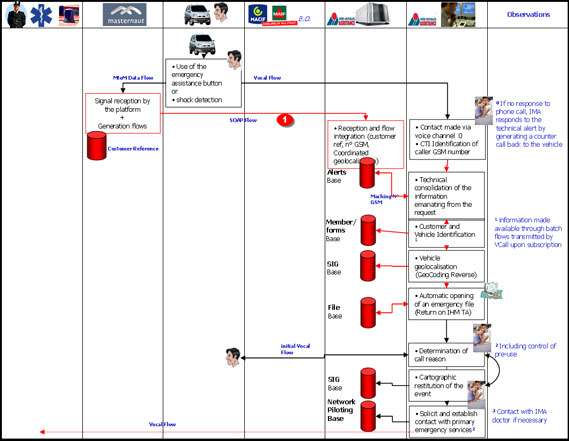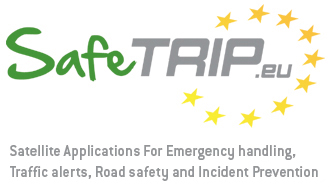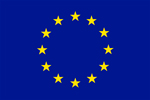Legal Analysis of Emergency Call “eCall” Service
– A Case Study
Each possible service has been analyzed with regards to data collected, purposes of collection and role models. Even if the analysis of data and purposes may be accurate at this stage of the SafeTRIP project, the analysis of role models could fast become out of date as technology and business structures change. Once full range of services has been defined and linked to commercial products that should be the trigger for a more full examination of the opportunities and risks of data protection from a legal and economic point of view.
This case study is of the emergency call service. It will include a description of the nature of the data collected, the purpose of the data collection, and an analysis of the possible benefits and threats to end-users of SafeTRIP and its related services.
Emergency calls have been done over telephone for decades and current protocol should be a guide. The following recommendations have to be taken into account:
- End user data and location data should be kept separate, the ID number of the on board unit being the key between these two databases, but ensure that any processor of data has access only to data strictly useful for the provision of services
- Location data should only be “opted-in” by the end user
- Terms and conditions of sales agreement signed by end users must include a whole provision fully dedicated to data protection with all its mandatory information to ensure that the subject is given a free and informed consent to subscribe to the eCall product.

Figure 8: When emergency health services are involved, both personal and location data are required for effective emergency management
Data collected
None of data collected as defined under the section of SafeTRIP services Analysis is considered after review as being sensitive under the Data Protection Directive. Consequently, there should be no specific restrictions to collecting these data. However, such services can lead to additional information related to personal health, which has to be collected and stored with a high level of security and confidentiality along with pre-arranged explicit and informed prior consent of the data subject.
Purpose of data collection
The main purpose of the eCall service is to allow drivers or automatic sensors to call for assistance. An emergency call facility is needed from accidents to crowd control. The collecting of data for safety purposes should encounter few restrictions from national security authorities once security and confidentiality measures are taken.
End user analysis
In most cases, the end user is a physical person, even if some data collected through an emergency call can be used for other purposes and of a benefit to an end-user that is a company. An example of this is data collected during an accident of an HGV can be used both for helping the lorry driver and/or his passengers and informing breakdown services of the road operator.
Scenario testing
Scenario 1: SafeTRIP operator builds an exclusive relationship with its customers
In the case of no application provider, the SafeTRIP platform operator collects ID number of the OBU, data location and Service Activation and forwards them to road operator or passenger transport operator. The SafeTRIP platform operator processes only anonymous data, and road operator or passenger transport operator has the key to link this back to the vehicle. In this case, it can be difficult for the road operator or passenger transport operator to conclude agreements with emergency services. This could mean that all data needs to be routed through the SafeTRIP platform, reducing the sharing of data amongst different actors.
If there is an application provider, the SafeTRIP platform operator could be the only collector and processor of personal data. Moreover, as there is no relationship between the road operator or passenger transport operator and the application providers, all data must flow through the SafeTRIP platform. An “operational” relationship could be concluded between the application provider – for example, one that guarantees help in English no matter what country the user is located - of eCall services and the end user. Once the anonymous data is received from SafeTRIP, the application provider would use the key to match the data and sends the correct information to the end-user.
Scenario 2: SafeTRIP operator shares his customers with application providers
Neither of these cases poses a problem from a data management perspective.
However, as indicated previously, with a physical person, we may run the risk of a “conflict of applications”, without any prioritization. This could increase the liability of the SafeTRIP platform operator and/or the application provider as they could potentially be challenged by the end user (considered as a consumer) for lack and/or bad emergency information.
Scenario 3: SafeTRIP operator does not have any contact with the end users
This scenario, where third-party eCall service providers are solely responsible for all services and application support, has been the most common approach to roadside assistance service provision by automobile manufacturers in the past. This approach has been vetted and approved by EU data protection supervisory authorities in the past and little alteration of the protocol associated with this scenario is needed. This is the recommended option for eCall service provision.




